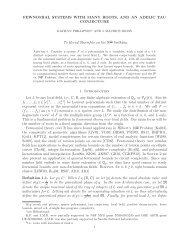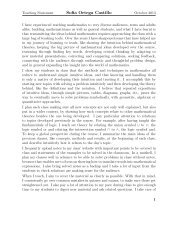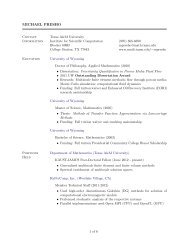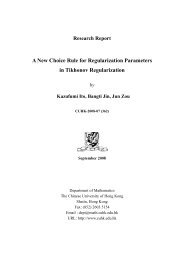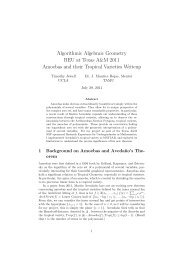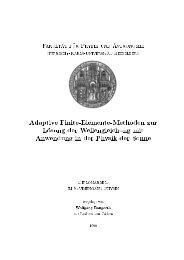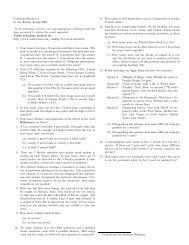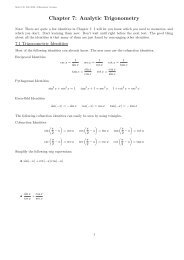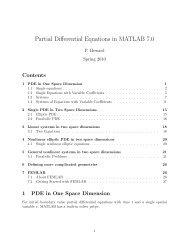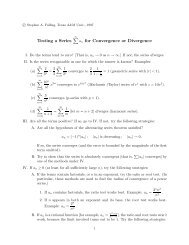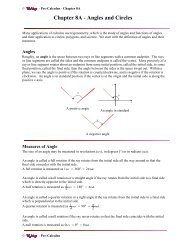Tensors: Geometry and Applications J.M. Landsberg - Texas A&M ...
Tensors: Geometry and Applications J.M. Landsberg - Texas A&M ...
Tensors: Geometry and Applications J.M. Landsberg - Texas A&M ...
You also want an ePaper? Increase the reach of your titles
YUMPU automatically turns print PDFs into web optimized ePapers that Google loves.
8 1. Introduction<br />
one can represent it as a sum<br />
(1.2.2) T(a,b) =<br />
r�<br />
i=1<br />
α i (a)β i (b)ci<br />
for some r, where α i ∈ A ∗ , β i ∈ B ∗ , <strong>and</strong> ci ∈ C.<br />
Definition 1.2.2.1. For a bilinear map T : A×B → C, the minimal number<br />
r over all such presentations (1.2.2) is called the rank of T <strong>and</strong> denoted R(T).<br />
This notion of rank was first defined by F. Hitchcock in 1927 [161].<br />
1.2.3. Aside: Differences between linear <strong>and</strong> multilinear algebra.<br />
Basic results from linear algebra are that “rank equals row rank equals<br />
column rank”, i.e., for a linear map f : A → B, rank(f) = dim f(A) =<br />
dimf T (B ∗ ). Moreover the maximum possible rank is min{dim A,dim B}<br />
<strong>and</strong> that for “most” linear maps A → B the maximum rank occurs. Finally,<br />
if rank(f) > 1, the expression of f as a sum of rank one linear maps is never<br />
unique, there are parameters of ways of doing so.<br />
We will see that all these basic results fail in multi-linear algebra. Already<br />
for bilinear maps, f : A × B → C, the rank of f is generally different<br />
from dim f(A × B), the maximum possible rank is generally greater than<br />
max{dim A,dim B,dim C}, <strong>and</strong> that “most” bilinear maps have rank less<br />
than the maximum possible. Finally, in many cases of interest, the expression<br />
of f as a sum of rank one linear maps is unique, which turns out to be<br />
crucial for applications to signal processing <strong>and</strong> medical imaging.<br />
1.2.4. Rank <strong>and</strong> algorithms. If T has rank r it can be executed by<br />
performing r scalar multiplications (<strong>and</strong> O(r) additions). Thus the rank of<br />
a bilinear map gives a measure of its complexity.<br />
In summary, R(Mn,n,n) measures the number of multiplications needed<br />
to compute the product of two n × n matrices <strong>and</strong> gives a measure of its<br />
complexity. Strassen’s algorithm shows R(M2,2,2) ≤ 7. S. Winograd [329]<br />
proved R(M2,2,2) = 7. The exponent ω of matrix multiplication may be<br />
rephrased as<br />
ω = lim n→∞ log n(R(Mn,n,n))<br />
Already for 3 × 3 matrices, all that is known is 19 ≤ R(M3,3,3) ≤ 23<br />
[29, 196]. The best asymptotic lower bound is 5<br />
2 m2 − 3m ≤ R(Mm,m,m)<br />
[28]. See Chapter 11 for details.<br />
The rank of a bilinear map <strong>and</strong> the related notions of symmetric rank,<br />
border rank, <strong>and</strong> symmetric border rank will be central to this book so I<br />
introduce these additional notions now.



